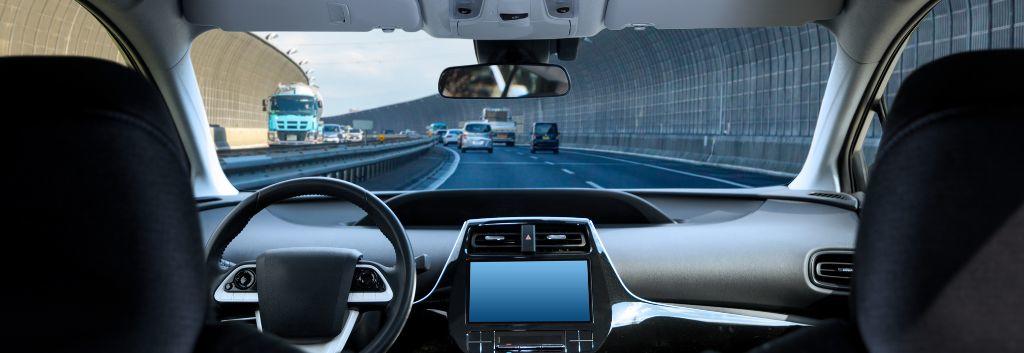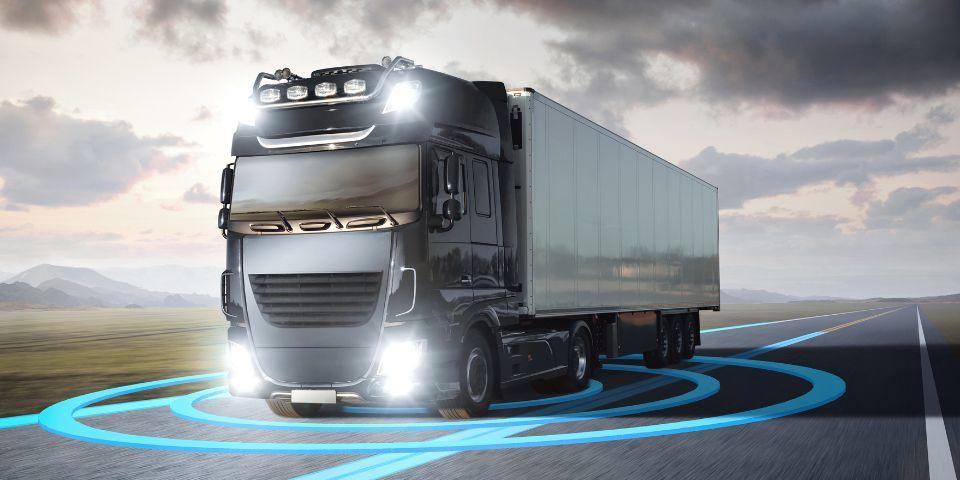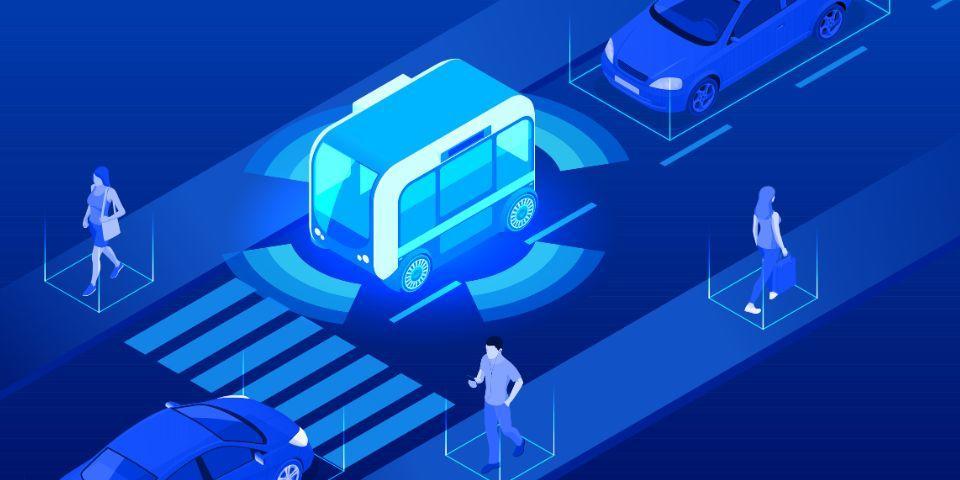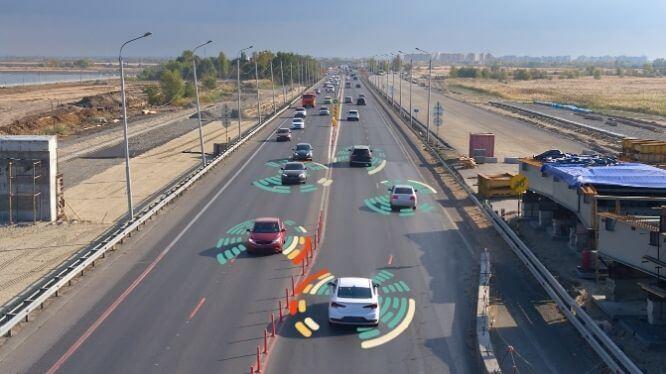
In recent years, various government agencies and private companies have been working together to develop autonomous driving technology. The government has set 2025 as a milestone for Level 4 autonomous driving, and is working on developing systems and conducting research and development on roads and systems.
The number of efforts toward the practical application of Level 4 is steadily increasing, and although there are no Level 4 passenger cars yet, a Level 4 cart transportation service was launched in Eiheiji Town, Fukui Prefecture in May 2023, and Haneda Mirai Development Co., Ltd. obtained the first private license to operate a Level 4 shuttle bus in June 2024.
Additionally, Level 4 taxis are now in operation overseas and are being actively used, and the technology is becoming more widely used.
In this article, we will explain the following:
・ autonomous driving level 4 What is
・ autonomous driving level 4 To achieve this
・ autonomous driving level 4 Latest domestic and international trends
By reading this article, you will be able to understand the overview of Level 4 autonomous driving and its future developments.
What is Level 4 autonomous driving?
The Ministry of Land, Infrastructure, Transport and Tourism's definitions of autonomous driving levels are based on the standards of the Society of Automotive Engineers (SAE) in the United States.
Level 4 autonomous driving is also known as "high driving automation," and is defined as "the system performs all dynamic driving tasks and responds to situations where it is difficult to continue operating in limited areas."
In other words, in areas where autonomous driving is permitted, the system will drive without human intervention, and if it finds itself in a situation where driving is difficult, it will handle all controls, such as stopping the vehicle in a safe place.
Status after Level 4 autonomous driving is allowed on public roads
The Road Traffic Act was amended in April 2023, lifting the ban on Level 4 autonomous driving on public roads in Japan.
However, the licensing process requires approval from the prefectural public safety commission that has jurisdiction over the area the vehicle is to be operated in. Even if the vehicle is generally classified as level 4, the conditions that must be observed when operating, such as the monitoring system and speed, may change depending on the conditions set by the prefectural public safety commission.

Source: Overview of the project and the Level 4 Mobility Acceleration Committee (RoAD to the L4/Ministry of Economy, Trade and Industry)
autonomous driving Level 4 If you would like to know more about the process leading up to the practical application of 2024 year 6 The first edition was released in Guide to Social Implementation and Commercialization of autonomous driving Transportation Services” (Ministry of Land, Infrastructure, Transport and Tourism, Ministry of Economy, Trade and Industry, National Police Agency).
Macnica has a strong track record in developing, introducing, and implementing mobility services, and offers services tailored to customer needs. If you are having trouble with the complicated procedures or don't know where to start, please contact us using the form below.
Level 4 autonomous driving "mobility services" are now in practical use
The government is calling 2023 the "first year of autonomous driving implementation" because the areas where autonomous driving is supported will start to expand.
In Japan, the use of level 4 autonomous driving has been prioritized in transportation services such as buses and taxis, rather than in logistics services such as trucks or passenger cars.
As mentioned above, Japan's first Level 4 public road transportation service began in Eiheiji Town, Fukui Prefecture in May 2023. The shuttle bus "ARMA," for which Macnica is involved in providing and maintaining the vehicles and systems, also operates at Level 4 within Haneda Innovation City.
The Ministry of Economy, Trade and Industry also announced plans to install Japan's first "autonomous driving lane" on a public road in September 2023. Sensors and cameras will be installed on a stretch of several kilometers from JR Omigawa Station in Hitachi City, Ibaraki Prefecture to a Hitachi factory, and autonomous driving buses will run along the lane.
Work on this lane will accelerate the pace at which Level 4 operation on public roads becomes practical.
Additionally, Level 4 driverless taxis are currently in operation in Beijing, China, and San Francisco, USA. China and the USA are leading the way in commercializing Level 4 transportation services.
autonomous driving level 4 "logistics service" begins test runs on highways
Although logistics services using trucks equipped with Level 4 autonomous driving have not yet been put into practical use in Japan, the government is actively working towards commercialization, with the goal of 2025 or later.
2024 6 The Ministry of Economy, Trade and Industry announced in National Comprehensive Development Plan for Digital Lifelines (draft) According to the "Numazu Expressway on the Shin-Tomei Expressway, SA ~ Hamamatsu SA During the period, priority lanes for autonomous driving vehicles will be set up only during late-night hours, and trucks will be allowed to drive at a higher speed. 4 Demonstration runs will begin toward practical application. 6 In April, the Ministry of Land, Infrastructure, Transport and Tourism announced a public call for applications for demonstration experiments on expressways. 1
The priority lanes for autonomous driving vehicles are expected to be used not only for Level 4 trucks, but also for Level 4 passenger cars and express buses.
The section of the Shin-Tomei Expressway between Suruga Bay Numazu SA and Hamamatsu SA will be over 100 km long, and if it is realized as a road on which passenger cars can also use it, it will be the longest test lane in the world.
In addition, from fiscal 2025 onwards, part of the six-lane section of the Tohoku Expressway will be converted into a lane for autonomous driving cars.
*1: Call for applications for road-vehicle coordination demonstration experiments on expressways (Ministry of Land, Infrastructure, Transport and Tourism)

Source: Demonstration of autonomous driving trucks on expressways (Ministry of Land, Infrastructure, Transport and Tourism)
There are no Level 4 autonomous driving "passenger cars"
There are currently no Level 4 autonomous driving vehicles available.
According to the Public-Private ITS Initiative and Roadmap (Digital Agency), the target for practical use on expressways for passenger cars is 2025.
Considering that the autonomous driving priority lanes that will be installed on some sections of the Shin-Tomei Expressway are intended not only for Level 4 trucks, but also for passenger cars and express buses demonstrating Level 4 driving, it is possible that demonstration tests for Level 4 passenger cars will also begin on the same sections soon.
What Level 4 autonomous driving Will Achieve

Level 4 is similar to level 3 autonomous driving, also known as "conditional driving automation," in that the system performs driving tasks in limited areas where specific driving environment conditions are met. However, it differs from level 3 in that the driver does not need to take back control even if the system is placed in a situation where it is difficult for it to operate, and this is one of the characteristics of level 4.
When Level 4 is realized, drivers will be able to perform a second task while driving. Unlike Level 3, where drivers must return to driving in an emergency, at Level 4 there is no problem with being completely immersed in the second task. It is expected that drivers will be able to eat, operate their smartphones, watch videos, read, etc.
In transportation services, it will become possible to operate unmanned taxis in specific areas, and in logistics services, unmanned transportation in specific areas will become a reality.
Five benefits of widespread adoption of Level 4 autonomous driving
If "brain-off," or autonomous driving Level 4, in which drivers do not have to think about driving, becomes widespread, the benefits to society as a whole will be significant. According to data from the Ministry of Land, Infrastructure, Transport and Tourism, Level 4 The expected effects on the 1 from (e.g. time, place, numerical quantity) 4 The following is a list of the Here are the benefits that drivers get 5 Add as
- Reducing traffic accidents
- Relief of traffic congestion
- Maintaining local public transportation
- Eliminating driver shortages
- Effective use of travel time
1. Reduction of traffic accidents
The first benefit expected from the widespread adoption of level 4 autonomous driving is the prevention and reduction of traffic accidents.

Source: Efforts toward practical use of autonomous driving (Ministry of Land, Infrastructure, Transport and Tourism)
According to a document released by the Ministry of Land, Infrastructure, Transport and Tourism in 2023, there were 2,636 traffic accident fatalities and over 360,000 injuries in 2021, and looking at the breakdown, about 54 % of the total were due to "violation of safe driving obligations," such as improper driving operation, careless driving, and distracted driving. In addition, when drunk driving, failure to stop, and overtaking violations are added, 95% of fatal accidents are caused by "drivers."
If Level 4 vehicles become widespread, it is expected that the number of fatal accidents will be reduced as a result of a significant reduction in accidents caused by drivers in limited areas.
2. Relief of traffic congestion
The next expected benefit is the mitigation and prevention of traffic congestion.
Traffic jams can be broadly divided into three types:
・Traffic jam due to accident
・Congestion due to construction
・Natural traffic jams
In addition, one of the causes of all traffic jams is "inappropriate distance between vehicles and inappropriate acceleration and deceleration."
Areas that are particularly prone to natural congestion include uphill sections, areas where expressways and regular roads connect, and tunnels, and are characterized by drivers unconsciously slowing down.
However, if Level 4 autonomous driving becomes widespread, it will be possible to drive at a constant speed and maintain a stable distance between vehicles, even in areas where drivers have unconsciously slowed down. The widespread use of Level 4 vehicles is expected to alleviate and suppress traffic congestion.
3. Maintenance of local public transportation
One of the benefits of widespread adoption of level 4 autonomous driving is the maintenance of local public transportation.
In depopulated areas, the number of public bus services is declining due to a decline in the number of people using them and the aging of drivers. In these areas, the main form of transportation is private cars, and elderly people are often forced to drive their own cars, making maintaining local public transportation a challenge.
In the future, if Level 4 public buses become widespread, the problems of driver shortages and operating costs will be resolved, and many routes and services will be able to be maintained. In addition, if it becomes known that there are stable services and that the buses are safe to use, we can expect an increase in bus users. In addition, the new initiative of "introducing autonomous driving buses" will also increase residents' attachment and pride in their local area.
It will also reduce the environmental impact in cities and provide more efficient and sustainable mobility services.
4. Resolving the driver shortage
The driver shortage is an urgent issue, due to a combination of factors including high demand for deliveries, faster delivery times, an aging driver workforce, long hours of overtime, and low wages despite the heavy workload.
Another factor that is inseparable from the driver shortage is the "2024 problem." The 2024 problem is a measure to reduce the workload of drivers, imposing restrictions on working hours under the Work Style Reform Improvement Act. This will improve the working environment for drivers, but will also mean that overtime wages that exceed the upper limit will no longer be generated. As many drivers would previously have been motivated by the compensation they received, this has in some ways exacerbated the driver shortage.
If transportation by unmanned trucks with level 4 autonomous driving becomes a reality, for the time being they are expected to be driven only in limited areas where specific driving environment conditions are met, such as highways, but this will likely reduce driver shortages and labor costs, thereby improving profits.
5. Make the most of your travel time
One of the benefits drivers will gain from level 4 autonomous driving is the ability to make more effective use of the time they would otherwise spend driving.
Normally, drivers need to concentrate on driving and cannot take their eyes off the road.
However, at level 4, the car will be able to do things other than driving in certain areas, so there will be a wider range of things it can do while driving.
As a supplementary explanation, according to a document published in 2015 entitled "Basic Policy for Smart Use of Roads Focused on Expressways" (Ministry of Land, Infrastructure, Transport and Tourism), each driver wastes approximately 40 hours per year. Considering that the total population of Japan in 2015 was approximately 127.1 million, this works out to approximately 5.08 billion hours of wasted driving time in Japan as a whole.
Although this does not mean that the entire population was driving, these figures show that there could be a significant economic impact if Level 4 becomes widely adopted.
Development trends of automakers for Level 4 autonomous driving
Here we will introduce information on Toyota and Honda, two Japanese automakers that have made public their development trends for level 4 autonomous driving.
Toyota's autonomous driving level 4 development trend
Toyota has announced that in 2024 it will begin a Level 4 autonomous driving service that will not involve humans in driving under certain conditions. This is aimed at a driverless robot taxi business, and for the time being the service will operate free of charge around the next-generation arena under construction in Odaiba, Tokyo, before expanding to the city center on a paid basis from 2025 onwards. If realized, this is expected to be the first transportation service in Japan to use ordinary vehicles on public roads.
The vehicle was developed based on Toyota's Sienna minivan and is already equipped with a Level 4 system, but for the time being, a driver will be on board for safety reasons.
Honda's autonomous driving level 4 development trend
Honda is developing Level 4 autonomous driving in partnership with GM and Cruise. In October 2023, the three companies announced that they will launch a Level 4 transportation service in central Tokyo using Cruise Origin, a dedicated autonomous driving vehicle jointly developed by the three companies.
It is expected to begin in early 2026.
The three companies plan to use Cruise Origin to provide new value through autonomous driving taxis and to contribute to solving social issues such as driver shortages.
Level 4 autonomous driving Case Study

In Japan, Level 4 demonstration experiments are gradually spreading toward 2025. In this chapter, we will introduce current examples of Level 4 demonstration experiments, both domestic and overseas.
Domestic examples of Level 4 autonomous driving
Demonstration testing for level 4 autonomous driving in Japan has focused mainly on airports and certain limited areas where it is highly feasible.
For example, demonstration tests of autonomous driving buses were conducted at Chubu Centrair International Airport in October 2021, at Haneda Airport in December of the same year, and at Narita Airport in February 2022.
In addition to buses, a demonstration experiment is being conducted at Nanki Shirahama Airport in October 2023 using the level 4 autonomous driving vehicle "macniCAR-01" to automate runway inspections.
On public roads, Japan's first Level 4 mobility service was launched in May 2023 in Eiheiji Town, Fukui Prefecture. A seven-seater autonomous driving car (cart) operates on a 2-kilometer section of the town. Operations with general passengers have also started.
Additionally, Shiojiri City in Nagano Prefecture conducted a demonstration experiment of a Level 4 EV bus in the city center in September 2023. The city aims to put the bus into practical use in 2025, and is conducting the demonstration experiment on part of the expected route.
Demonstration experiments are also being conducted on the equivalent of level 4 for trucks in logistics services.
In June 2023, the Japanese branch of TUSIMPLE HOLDINGS, INC., a U.S. autonomous driving truck technology company, released a video of a test drive on the Tomei Expressway.
As we enter 2024, pilot projects aimed at introducing Level 4 are becoming more active, and the number of cases is likely to continue to increase daily.
Overseas examples of Level 4 autonomous driving
Overseas, there have been more publicly announced cases of Level 4 autonomous driving demonstration experiments and practical applications in transportation and logistics services than in Japan.
First of all, when it comes to autonomous driving taxis, there are many examples of initiatives in China and the United States.
For example, in Beijing, China, internet giant Baidu has been operating unmanned autonomous driving taxis that can carry the general public since March 2023.
The unmanned taxi is called by a special smartphone app and automatically drives to the specified destination. However, there are still issues to be addressed, and when a problem occurs that the system cannot judge, it is handled by a human being via a remote system, so future developments are expected.
In addition, in San Francisco, USA, Waymo and GM Cruise started operating autonomous driving taxis in June 2022.
Furthermore, in August of the same year, the company officially obtained permission to operate 24 hours a day, and progress is being made in putting the system into practical use.
autonomous driving taxis have only been introduced in certain restricted areas so far, but there is no doubt that they will become widespread in the near future.
There are also many examples of logistics services in the U.S. and China. For example, PLUS.AI, a U.S. company developing technology for autonomous driving trucks, conducted the first commercial transport demonstration experiment in the U.S. equivalent to Level 4 autonomous driving in December 2019.
The distance traveled was approximately 4,500 km, from TULARE, California on the east coast of the United States to QUAKERTOWN, Pennsylvania on the west coast. In China, PONY.AI, a company developing autonomous driving technology, conducted a demonstration experiment of China's first truck equipped with level 4 equivalent on a highway in December 2021.
China and the United States are leading the world in conducting demonstration experiments toward the practical application of Level 4.
Summary: Focus on progress towards Level 4 by 2025
The development of level 4 autonomous driving is being led by transportation and logistics services, with the United States and China leading the way globally.
However, with the public and private sectors in Japan also working together to work towards the implementation of Level 4 in society, and Toyota and Honda working closely with world-leading overseas companies developing autonomous driving technology, it is possible that the implementation of Level 4 in society will progress rapidly.
It is expected that new information regarding Level 4 will be released one after another in the near future. It will be necessary to continue to pay close attention to the latest developments.
Inquiry
the Company, Macnica, provides a variety of products and services related to autonomous driving. If you have any questions or requests regarding autonomous driving, please feel free to contact us below.

